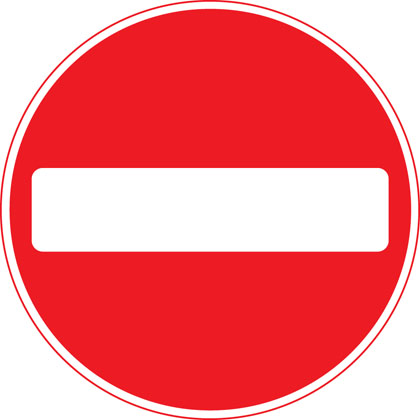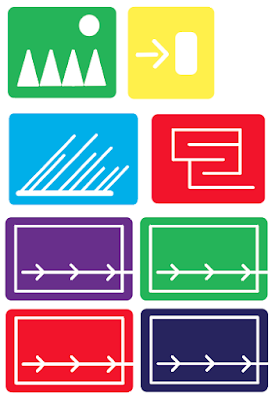Pictograms
They're used to warn, guide or protect the audience, so must be immediately decipherable. They must get right to the point and be clear in it's message in such a way that it cannot be misunderstood. Therefor
e, they must also be internationally recognisable and independent of culture.
Semiotics
Semantics - sign and meaning, dependant on: context, knowledge, society and culture
Syntactics - formal, unambiguous and succinct, dependant on: form, brightness, colour, movement, material, scale, position and shape.
Pragmatics
Indicative - informs the audience that they are allowed to do something, but do not necessarily have to. It is up to their own decision and choice.
Imperative - the intention of influencing the audience's behaviour. eg. prohibition signs, not allowing the audience to do something, even if they may want to.
Suggestive - informs the audience of an effect that their actions may have, with an intention of setting of a response/feeling from the audience. This information is regardless of time and space.
Basic Signs
 The Square
The Square - "the primary characteristics of this sign: a symbolic object, boundaries property, also a dwelling place with the feeling of floor, ceiling, walls, protection"
- "With the square standing on it's corner we come into the field of oblique lines. The view of this sign is disquieting, and its position on its point indicates a certain intention, which is why this form is used as the ideal background for traffic signs, especially in the United States." (Fruitinger, 1989, p.43)
 The Triangle
The Triangle - "If we place the triangle vertically on its apex, it obtains a direction giving character, with movement transferred from the vertical to the horizontal. The simple triangle is therefore used as a direction sign, which succeeds so long as the directions are horizontal, left or right."
- "Triangles with a horizontal side form ideal backgrounds for signals (road signs, etc.) because of their symmetry. The triangle with horizontal base conveys an impression of stability and permanence, like a pyramid. It is also the symbol for the expression "wait," rather like a mountain, whose only active function is to suffer erosion."
(Fruitiger, 1989, p.44)
 The Circle
The Circle - "Modern humans probably have a more spontaneous relationship with the straight line than with the curve. Daily encounters with level ground and with all kinds of constructions are primarily based on two principles of horizontal and vertical. We appreciate rounded forms with the senses rather than the mind." (Fruitinger, 1989, p.45)
- "The feelings are addressed more strongly by the circle than by any other sign. Depending on their character the viewers will place themselves either inside or outside the circle"

- "Enclosure becomes disquieting and is felt as claustrophobia."
(Fruitinger, 1989, p.46-47)
The Arrow - "When two oblique lines come together to form an angle, the expression of a movement or direction is produced in some form. Angles pointing to right or left have a stronger movement than those pointing up or down, for the obvious reason that human movement is normally on a level. (Only in elevators does the vertically places arrow obtain a clear expression of movement up and down.)" (Fruitinger, 1989, p.48)








 The Circle - "Modern humans probably have a more spontaneous relationship with the straight line than with the curve. Daily encounters with level ground and with all kinds of constructions are primarily based on two principles of horizontal and vertical. We appreciate rounded forms with the senses rather than the mind." (Fruitinger, 1989, p.45)
The Circle - "Modern humans probably have a more spontaneous relationship with the straight line than with the curve. Daily encounters with level ground and with all kinds of constructions are primarily based on two principles of horizontal and vertical. We appreciate rounded forms with the senses rather than the mind." (Fruitinger, 1989, p.45)




